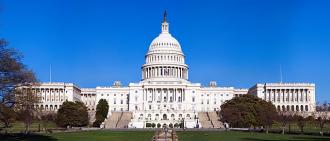Wider trade deficit slashes GDP, but consumers keep spending
WASHINGTON (MarketWatch) — The U.S. economy slowed in the fourth quarter and annual growth failed to reach 3% for the 11th straight year, reflecting the huge hurdles the new Trump administration faces in trying to speed up a 7 ½-year-old expansion.
Gross domestic product, the official scorecard for the economy, expanded at a 1.9% annual clip from October to December, the Commerce Department said. That’s a marked drop from a 3.5% growth rate in the third quarter and below the 2.2% MarketWatch-compiled consensus.
U.S. stock futures YMH7, -0.09% were pointing to a weaker start. However, the Dow Jones Industrial Average on Thursday finished at a record high and is up 25% over the last 52 weeks.
For the full year, the U.S. grew just 1.6%, down from a 2.6% clip in 2015. The last time the U.S. topped 3% growth — the historical average is 3.3% — was in 2005.
President Donald Trump has vowed to push the economy into a higher gear with an aggressive combination of tax cuts, reduced regulations and more government spending on public works. Yet economists say it will take time before the U.S. reaps any benefits.
Most predict the economy will grow around 2% or a bit faster in 2017. If Trump’s approach works, the payoff is unlikely to come until the end of the year or early 2018, they say.
A wider trade deficit — a negative for GDP — was by far the biggest anchor in the fourth quarter. The economy would have topped 3% growth if the trade gap has basically been unchanged.
Other key bulwarks of the economy such as consumer spending and business investment showed an underlying resilience that kept growth on a steady path.
Consumers, the torchbearers for the U.S. economy, increased spending by a solid 2.5%. They were especially gung-ho on big-ticket items such as new cars or computers. Outlays on long-lasting or durable goods leaped almost 11%.
Businesses also ratcheted up overall spending, including the first increase in equipment purchases in five quarters. Similarly home builders boosted investment in new housing by just over 10%, marking the first advance in three quarters.
Companies also stocked up more: the value of inventories jumped by $48.7 billion after barely any change in the spring and fall.
Firms are replenishing warehouse shelves after drawing down inventories in the first half of 2016 to alleviate an excessive buildup. The cutback in production last year helped constrain the economy.
Trade has been another major drag on the U.S. owing to a soft global economy and a stronger dollar that made American exports more expensive. In the fourth quarter, exports sagged 4.3% even as imports sizzled 8.3%. That’s the biggest gain in two years.
Part of the steeper trade deficit at the end of 2016 reflected a big drop in soybean exports after a surge in the third quarter tied to a poor harvest in South America. The bonanza in soybean exports in the fall gave a boost to third-quarter GDP.
What remains to be seen is whether a tougher approach on trade by the new Trump administration hurts imports and exports. Trump has threatened a tax on Mexican imports if the country refuses to pay for the construction of a border wall along the U.S. border.
Inflation, meanwhile, rose at a 2.2% annual pace in the fourth quarter, according to the PCE price index, the preferred gauge of the Federal Reserve. That’s the highest level since 2012.
The PCE has been closer to 1% for much of the past two years. If inflation picks up any further, it could spur the Fed to raise interest rates more aggressively in 2017 than the bank has so far signaled.















